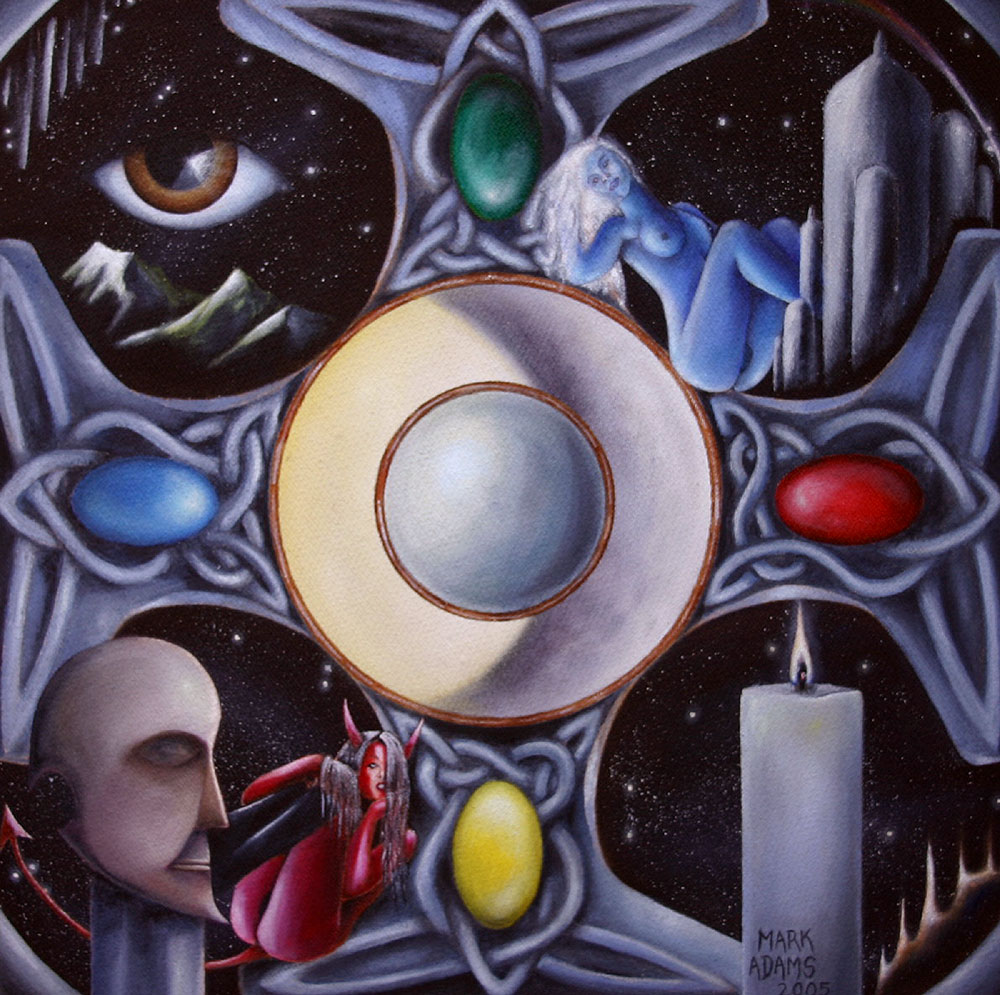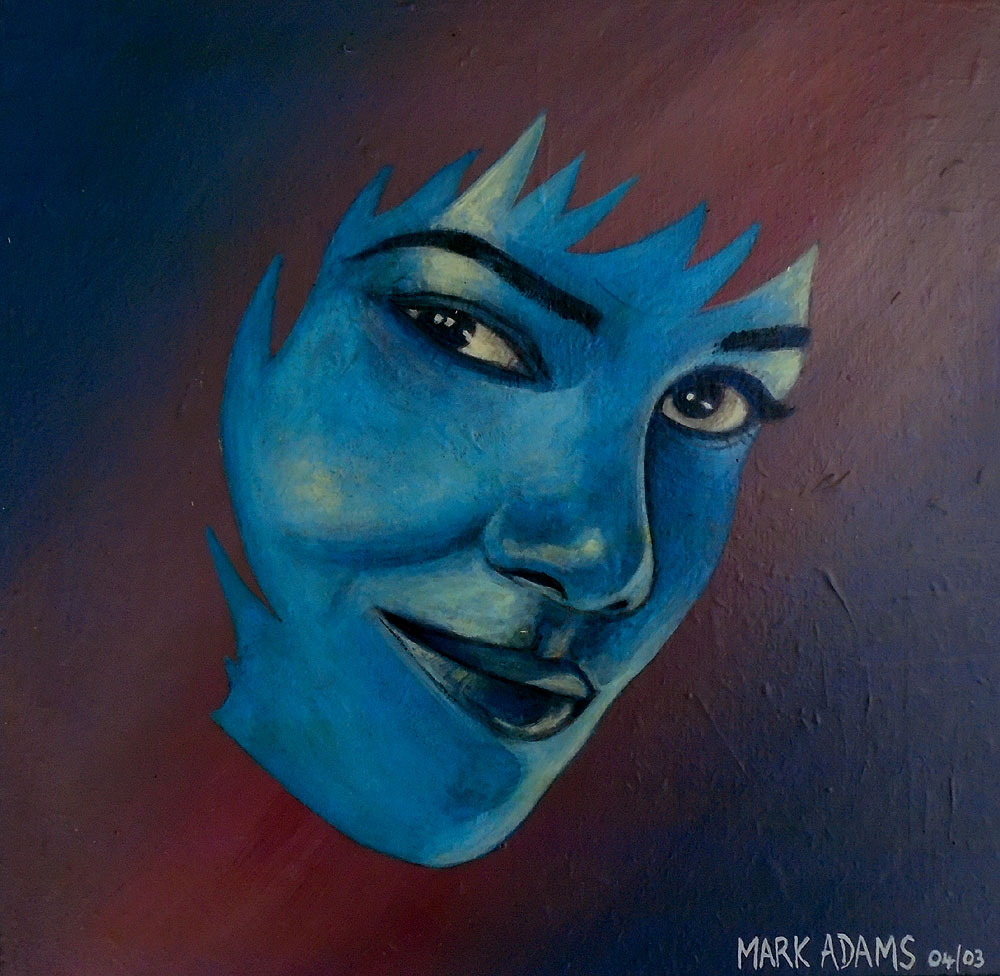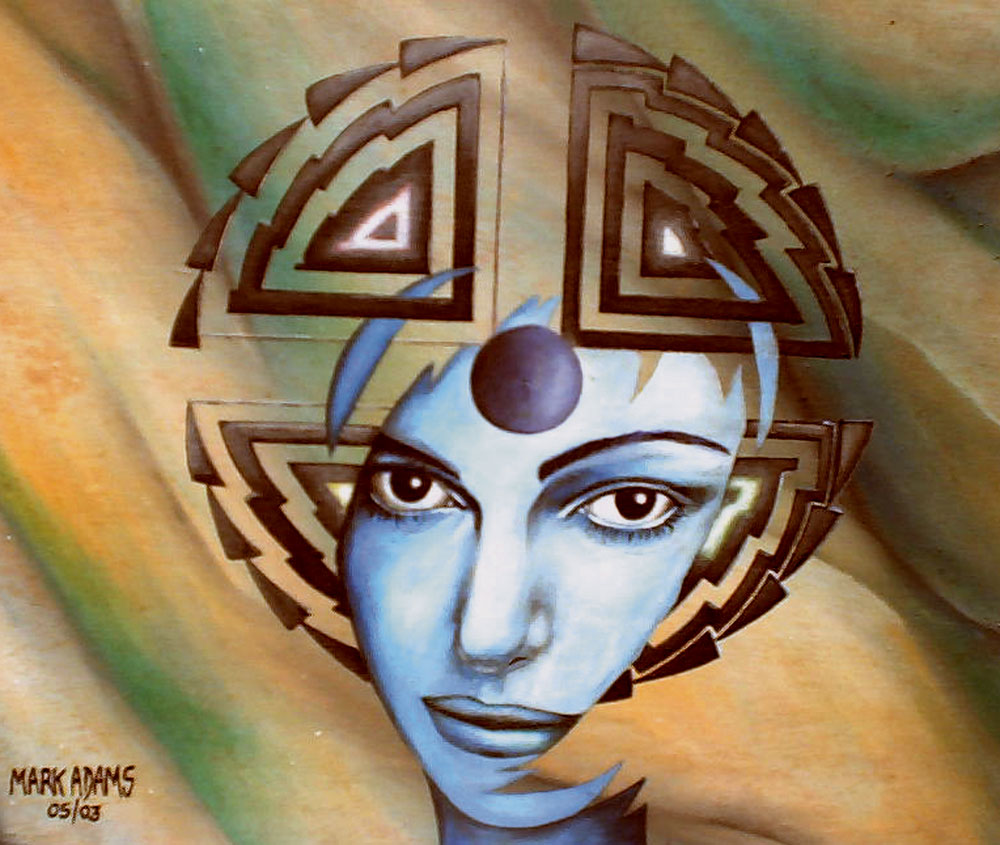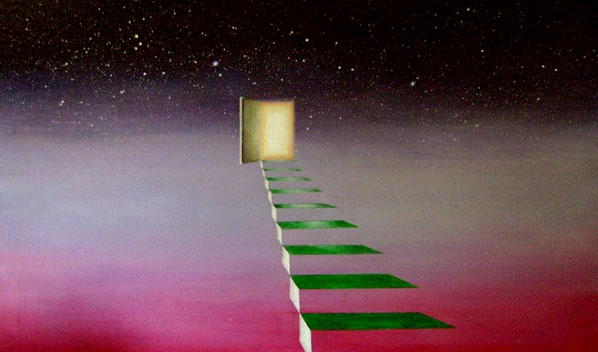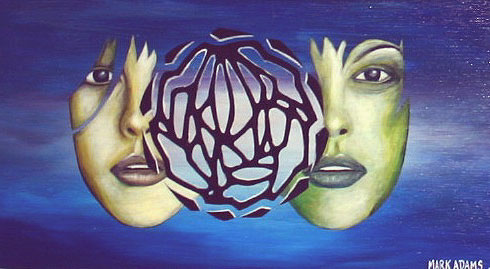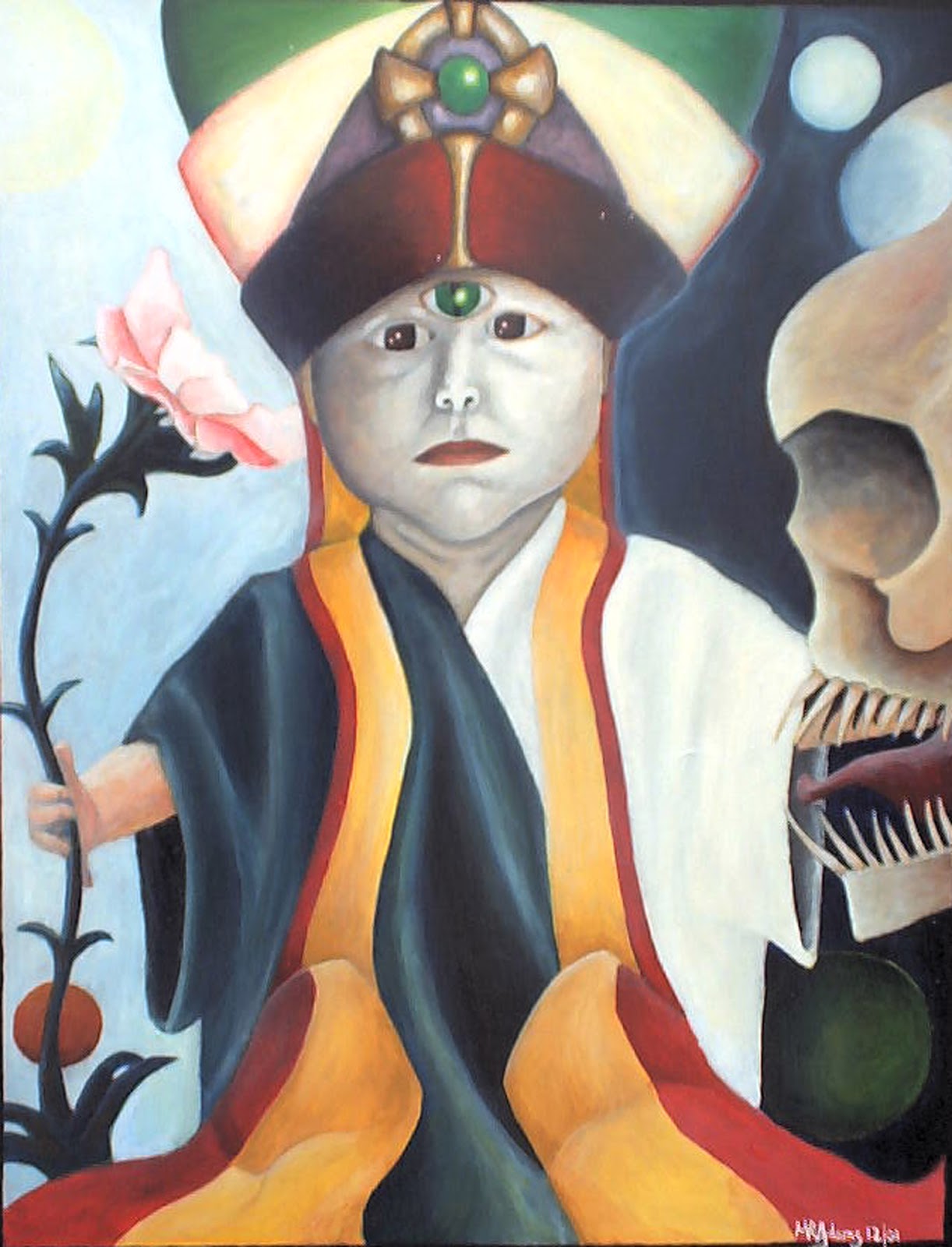Shamanic Shadows
‘Shamanic Shadows’ was another early painting, since making an effort to learn painting techniques and striving for a realism to convey surreal, unconscious, inner images and ideas. This painting was my second painting following Space Baby and painted around the end of December 2001.
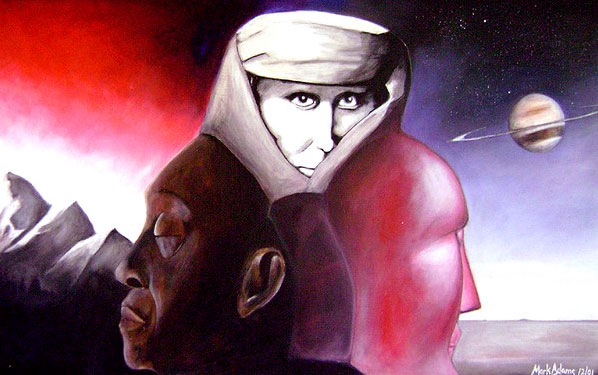
I was already familiar with Freud’s concepts of the unconscious mind and his model of the ego, id and super-ego which I observed or extrapolated in the workings of my own mind. Of course, the human personality and mind cannot be restricted to a simple model, but I found the ego, id and super-ego a good starting point to understanding the links between tensions with almost opposing separate personalities contending for expression within us all in unique ways, differing from individual to individual, dependent on personal experience and environment.
I was heavily into Jung’s idea which extended from Freud’s ideas. I was extremely interested in Jung’s concept of the collective unconscious and the archetypes, with what Freud’s concept of ego, id, super-ego was – an expression of the archetypes emerging from the collective unconscious which may appear in different forms from the individual, all the way to the cultural level.
In Shamanic Shadows, the ego is represented by the figure emerging between the two figures either side of the ego. The figure on the left, represents the id, with it’s instinctual nature, intuitions, animal drives along with ancient knowledge and/or wisdom, collected throughout time since the dawn of evolution. The figure on the left, represents the super-ego, containing cultural, societal influences, rules of society, social norms and so on. The super-ego can be quite brutal in some, causing a conflict within an individual. The super-ego contains what is learned through one’s environment and culture. If the super-ego wields too much power, this will be at the expense of the other entities, the ego and the id, although an imbalance in any of the three entities can cause havoc in one’s psyche.
At this moment in my life, my own super-ego possessed far too much power, as represented with the colour red. I was in the process of balancing out my own inner entities and to transfer the power of the super-ego to the ego and to give my id less restriction with it’s own drives and expression, although free reign to the id can also lead to undesirable situations which I was later to find out.
The other motifs in the painting have a meaning also, or a meaning I discerned after painting this picture, with the planet Saturn representing a ‘protector’ entity and the mountains to the left representing a source of power which had an ambivalent nature – a force to be used for either creation or destruction.
The ‘ego’, of course is the human-being’s sense of who they are, or sense of self and if the id and super-ego wander around the psyche without the awareness of the ego, or unconscious of these entities, many problems with the individual can result, which can be observed with conflicts with individuals and collective societies, which we can observe with conflict in history, up until the present day.
Conflicts, whether individual or collective, have their beginnings in the psyche. Peace is also found or created in the same way.

